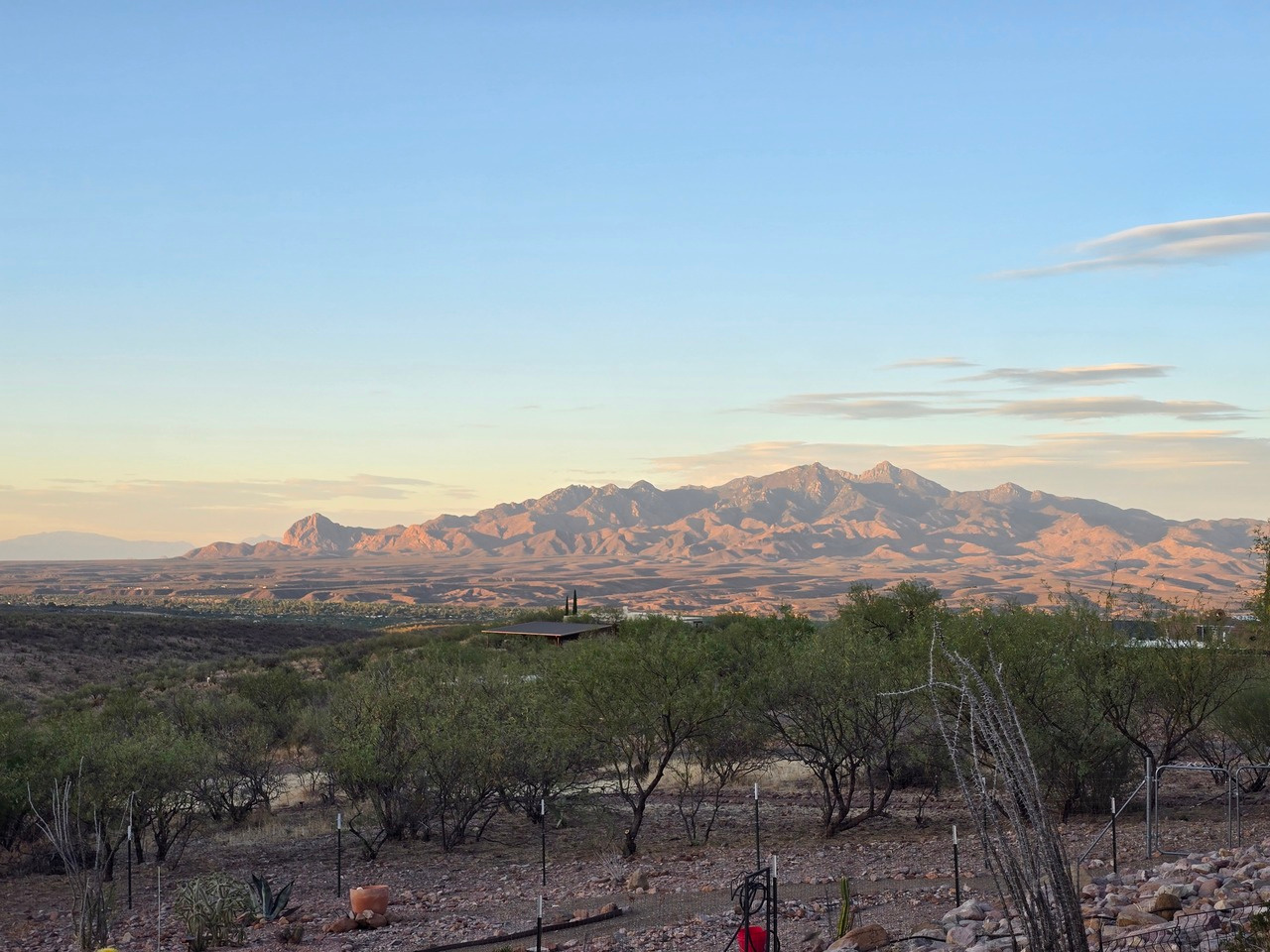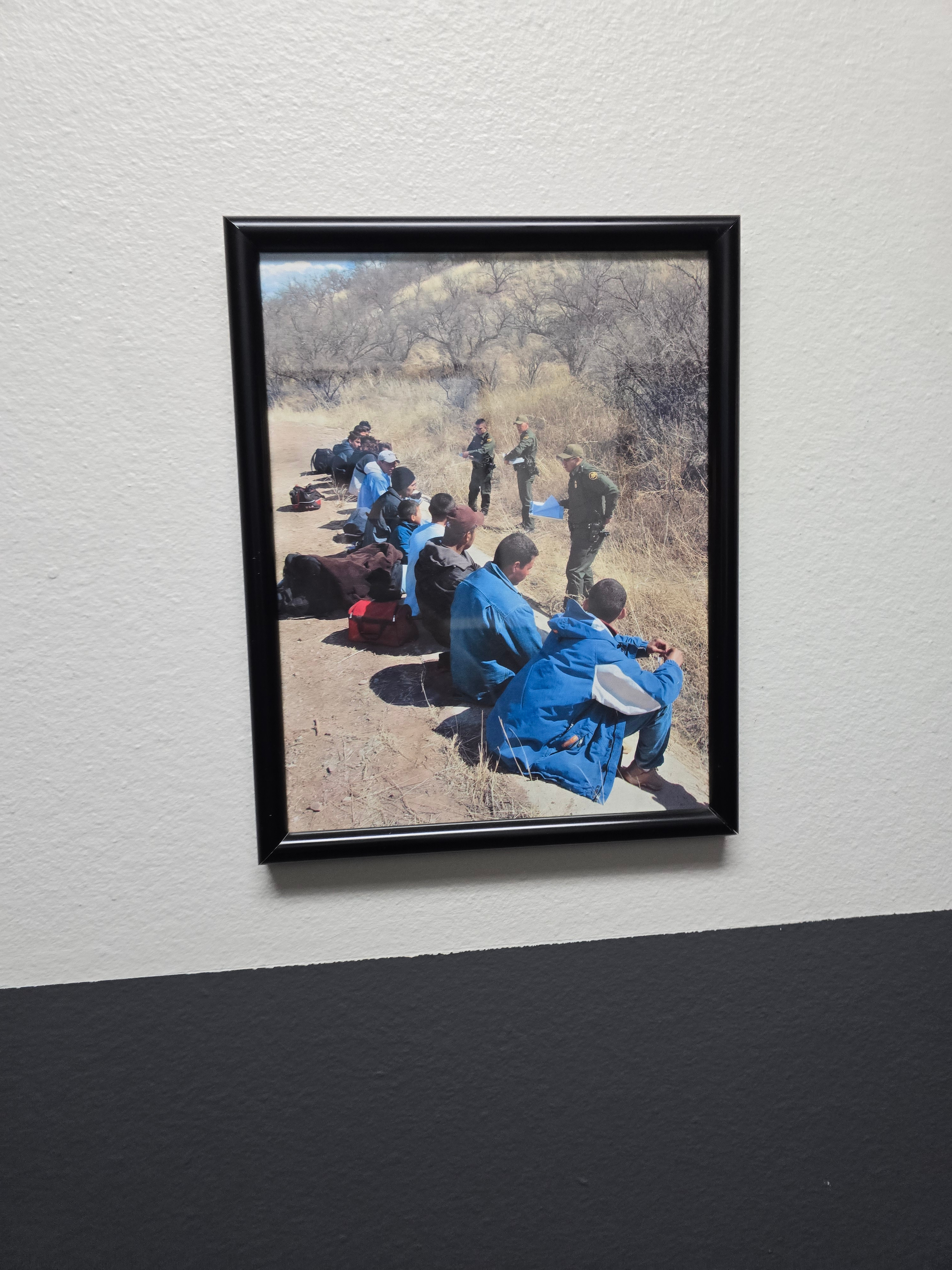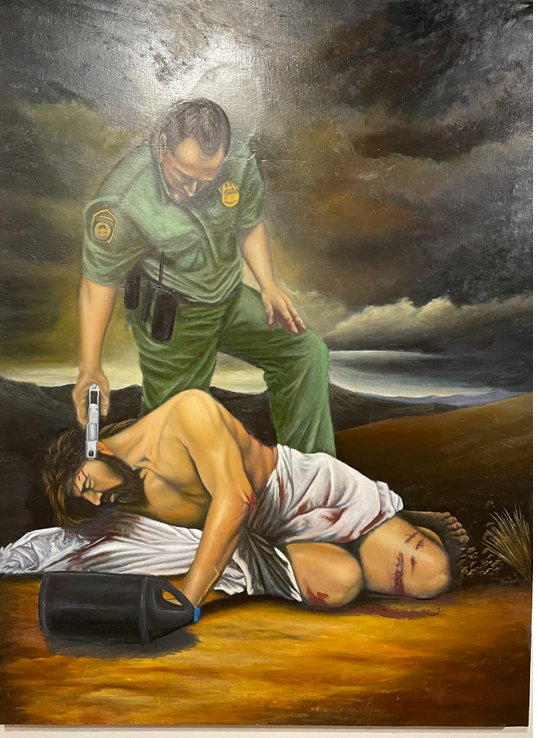LiA Reflection Week 4: Perspectives and Practice

This blog builds off of experiences from previous blogs. It may be helpful to read the previous ones: Week 1, Week 2, Week 2.5, Week 3.
Patrolling the Border
We began this week with a trip to Nogales’ US Border Patrol. My program wanted us to receive a broad range of perspectives on the borderlands, which includes hearing from the perspective of the enforcers of the border.
The Border Patrol Agents began by attempting to dispel any misconceptions we might have about who exactly they are. They expressed frustration at the media depicting them as Customs and Border Protection (CBP) or as ICE. They clarified that they are actually one of CBP’s 3 branches: one at the point of entry, one in the air, and Border Patrol between points of entry, focused on immigration enforcement.
We toured the Nogales Border Patrol facility, which was referred to as the “Disneyland” of Border Patrol facilities. They spoke to us about all of the places they have found drugs, and showed us footage of them finding migrants in the desert. They clearly felt a lot of pride in the work and felt that they were the front lines in protecting the United States against the threats of the Southern border.

A fascinating thing we learned was that if an agent “caught a case” at the end of their shift (likely meaning, saw a migrant crossing the border), they might look past it in the interest of avoiding staying late to do paperwork. In their words, migrants would try to “exploit” this.
Throughout the process, all three of our Border Patrol guides indicated that they were either immigrants themselves or the children of immigrants. It always interests me to see how individuals whose lives are closely tied to immigration think about immigration enforcement. Oftentimes, it seems to operate on the assumptions that there are “good” and “bad” migrants and that to protect the actions of the “good” ones close to them, they ought to stop the “bad” ones from coming into the United States and ruining the opportunity for others. I do wonder, though, does one’s country of origin or economic status determine whether a person is “good” or not?
Another common theme they brought up was the lack of “females” who entered the agency, and cited that many of them have discomfort with the lifestyle of working in the desert. At several instances, they looked to the girls of our group and asked if we were interested in joining.
To be fair, in some ways I can understand it. I went into this experience hoping to learn more about the roots of the ideas of individuals who do not necessarily share the viewpoints as me. One thing I can understand is the monetary aspect. Those men we spoke to are likely making more each year than I will ever make. They told us that the starting salary for an entry-level Border Patrol Agent is around $ 60,000 to $70,000 per year, with a potential promotion each year. They said that by an individual’s 3rd or 4th year, their yearly salary is well into the six-digit range. Additionally, retirement age is usually around 50 for those agents. When unemployment for the newest generation of the workforce is so high, I can certainly understand how enticing this job can be. As one of the agents stated, you get paid to ride horses, bikes, and trucks all day. They told us that they get to engage in a “Professional game of hide and seek,” and referred to asylum seekers who used to wait on the US side of the border as “give-ups.” In many ways, it seems like agents get many benefits and luxuries from their job that many Americans do not get to share. For them, it is an exciting, enjoyable, and honorable job.
Luis Sotero
For many migrants, Border Patrol agents bring up a different image to mind. Luis Sotero, an incredible artist we met in Nogales, Sonora, made the harrowing journey through the desert years ago. He was deported to Mexico, but during his time in detention, he discovered his ability to create art. This ability flourished into beautiful images of desert landscapes, moving paintings, and stories told through art. He told us that he cries when creating each painting because he feels the tremendous emotion behind what he is drawing.
One of his paintings that caught the eye of everyone in our cohort was the one shown below.

This painting depicts a border patrol agent with a gun to Jesus’s head. Our interpretation of this artwork was that, in many ways, Jesus can be considered a migrant. This artwork implies that perhaps if he were living in a different time, he too would be treated with violence and turned away, similar to many migrants today.
This striking difference in the way border patrol is portrayed shows the multitude of perspectives in the borderlands. An individual or a group can be vilified or depicted as a hero regardless of their intentions or background. That applies to both migrants and border patrol. However, it must also be acknowledged that the US political and economic system strongly favors Border Patrol agents and vilifies migrants. If this image makes one uncomfortable, perhaps they should reflect on where the root of that discomfort lies.
Mariachi Group Practice
An experience that strongly impacted me was visiting the San Joselito Mariachi and Orchestra Practices. These groups, based in Nogales, Sonora, are youth music programs. This experience has a special impact on me because I grew up playing in youth orchestras and bands, which have formed many of my life experiences and opportunities.
In Nogales, it can be easy for kids to get involved in dangerous situations when their parents are working several jobs or long hours. At San Joselito, they have created a sort of after-school program based around music. Here, students can gain musical skills that can open doors to scholarships and professional opportunities. They are either in the orchestra, the mariachi band, or both. One of the goals of the program is to help students dream beyond their current realities and work for the life they want to have. It also helps to provide community and provide them with people to love and care for beyond their family.
The program has been running for two and a half years, and in that time, these students have become phenomenal musicians. Despite not having many resources or professional support, these students have improved rapidly. They practice for hours each day, individually, with the group, and/or with the instructor when they come to support. After only two and a half years, with kids ranging from elementary to high school age, they sounded comparable to any high school ensemble, which would often consist of students with over six years of experience.
I was very impressed by their skill level and dedication. As we prepared to leave, I stood in the doorway to the practice space next to an older gentleman. As we listened to the students rehearse, the gentleman asked me if I played mariachi. I said that although I unfortunately did not, I did love music. He proudly pointed out his son playing trumpet. The smile on his face as the father watched his son practice showed me how much it meant to him that his son was taking part in such a program.
Cochise College
Another experience from this week was spending time at Cochise College, a junior community college in Douglas, AZ. Douglas, a former smelting town is now an area with low economic opportunity. The college primarily serves Latino students, and they all speak Spanish. We were told Douglas is a transborder population, meaning that the people lived constantly crossing borders. At first, when I considered this idea, I was confused as to what this meant. I could not imagine why someone would consistently choose to cross the US-Mexico border. When I turned it towards my own context, I had a better idea of what that might look like or feel like.
I grew up on the border of Wisconsin and Minnesota, with family on the Minnesota side. I would often cross to visit family or buy clothes there, where it is tax-free. There were no ID checks as I crossed the border, simply a sign that says “Welcome to Minnesota.” The US-Mexico border used to be like that before its intensive militarization. Now, the community that once spanned both sides of the border is made more divided, as traveling between sides often involves intense questioning of identity and place of origin.
Cochise College has some interesting art programs and courses that focus on identity in the borderlands. One feature of the classes is the 9-line Bio poem, which begins with your first name, ends with your last name, and contains lines filled with elements of their identity, life experience, and their proudest achievements. The names on the poems would then be redacted, and they are sent to the art program. Students in the art program would create art based on the poem, and eventually, the bio poem and artwork would be put together as a display, where the artist and the writer meet for the first time. Innovative projects like this help students reconnect with their identity and emphasize academics centered on their own story as they begin their college journeys.
Reflections
This week further expanded my understanding of perspectives in the borderlands. There are so many people living and/or moving through the borderlands, navigating the realities of this region. While these experiences are helping to shape my perspective on the region, I know that this is only a glimpse into experiences in the borderlands.
I am so grateful to have the opportunity to spend time in this region and be welcomed by so many people to hear their perspectives. I hope I can find a way to bring these experiences back with me, and that I will continue to share these stories once I return home.





Please sign in
If you are a registered user on Laidlaw Scholars Network, please sign in